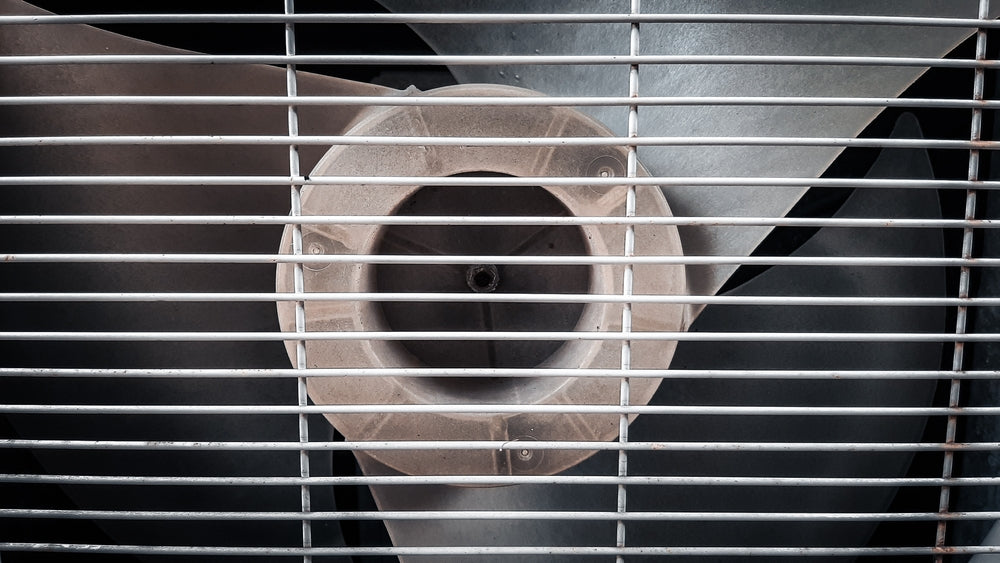
What is the Most Efficient Fan Blade Design?
Finding the most efficient fan blade design is an excellent starting point if you are searching for the best methods to optimise the performance of your industrial ventilation systems.
Whether you're involved in plumbing, air-conditioning, refrigeration, or heating, understanding the most efficient fan blade design can lead to significant energy savings and enhanced system output.
In this article, our specialists at BCB Sales & Service explore the key aspects of fan blade efficiency, compare different fan blade shapes, and provide actionable advice for selecting the best quiet fan in Australia.
What Do We Mean by the Efficiency of Fan Blade Design?
Fan efficiency refers to the ability of a fan to convert electrical energy into effective airflow.
In industrial settings, installing more efficient fans can help to reduce energy consumption, lower operating costs, and enhance system performance. According to the American Society of Heating, Refrigerating and Air-Conditioning Engineers (ASHRAE), optimising fan design can lead to up to 20% energy savings.
As you make your selection, several factors will influence fan efficiency, including:
- Blade Shape: The shape of the blade significantly impacts how effectively the fan can move air. Aerofoil-shaped blades, for example, are designed to reduce drag and improve airflow efficiency.
- Material: Lightweight, durable materials like aluminium or composite materials can improve efficiency by reducing the load on the motor.
- Blade Angle: The pitch or angle of the blades affects how much air the fan moves. A steeper angle can move more air but may require more power.
- Number of Blades: More blades can help move air more efficiently, but there is a point of diminishing returns where additional blades add drag without significant gains in airflow.
What are the Different Types of Fan Blades Available?
As you work to optimise your system, you will find that different fan blade types are better suited for various applications. Some of the primary types are:
- Axial Blades: Commonly used in ventilation and cooling applications, axial blades move air parallel to the fan shaft. They are typically used in applications requiring high flow rates and low pressure.
- Centrifugal Blades: In HVAC systems, centrifugal blades move air perpendicular to the fan shaft and are known for their high-pressure capabilities. They are ideal for systems that require high static pressure.
- Mixed Flow Blades: Combining features of both axial and centrifugal designs, mixed flow blades offer a balance of airflow and pressure, making them versatile for various applications.
Comparison of Fan Blade Shapes:
In these different types of fan blades, there are also the fan blade shapes to consider:
Straight Blades:
- Pros: Simple design, cost-effective
- Cons: Higher noise levels, less efficient at moving air
Curved Blades:
- Pros: Improved airflow, lower noise levels
- Cons: More complex design, higher manufacturing cost
Aerofoil Blades:
- Pros: Highest efficiency, reduced noise, optimised airflow
- Cons: Most expensive to manufacture
Blade Count: 3-Blade vs. 5-Blade Designs
Regarding the number of blades, the choice can impact both noise levels and efficiency.
Generally, 3-blade fans tend to be noisier than 5-blade fans, as the increased number of blades typically helps distribute the airflow more evenly, reducing noise. As such, the 5-blade design is often preferred in settings where noise reduction is a priority.
While 5-blade fans may be quieter, they are not always more efficient. The additional blades can create more drag, reducing the overall efficiency. However, the design and angle of the blades play a significant role in determining the fan's efficiency.
3-Blade vs. 5-Blade Designs:
|
Feature |
3-Blade Fans |
5-Blade Fans |
|
Noise Levels |
Higher |
Lower |
|
Efficiency |
Generally higher |
Potentially lower due to drag |
|
Airflow Distribution |
Less even |
More even |
Impeller Design and Its Impact on Efficiency
The impeller is a critical component of fan systems, impacting both efficiency and noise levels.
- Radial Impellers: Known for their durability and high-pressure capabilities, radial impellers are suitable for industrial applications that require robust performance.
- Backward-Inclined Impellers: These offer higher efficiency and are quieter, making them ideal for HVAC systems. They are designed to minimise turbulence and noise.
- Forward-curved impellers: These provide high airflow at low speeds but are generally noisier. They are often used in applications where space constraints limit the size of the fan.
Choosing the Best Quiet Fan for Industrial Applications
Selecting a quiet fan involves several considerations:
- Blade Design: For quieter operation, opt for curved or aerofoil blades. These designs are more efficient at moving air while minimising noise.
- Blade Count: Consider fans with more blades to reduce noise. While more blades can sometimes reduce efficiency, the reduction in noise can be beneficial in settings where quiet operation is critical.
- Noise Reduction Features: Look for fans with integrated noise-dampening technologies. These features can include vibration dampers, insulated housings, and specially designed motors that operate more quietly.
Discover the Most Efficient Fan Blade Design for Your System with BCB Sales & Service
Efficient fan blade design is essential for optimising industrial ventilation systems. By understanding the different fan blade shapes, the impact of blade count on noise and efficiency, and the importance of impeller design, you can make informed decisions to enhance your system's performance.
Explore our selection of fan blades available online, or speak with our experts at BCB Sales & Service today for more information.
